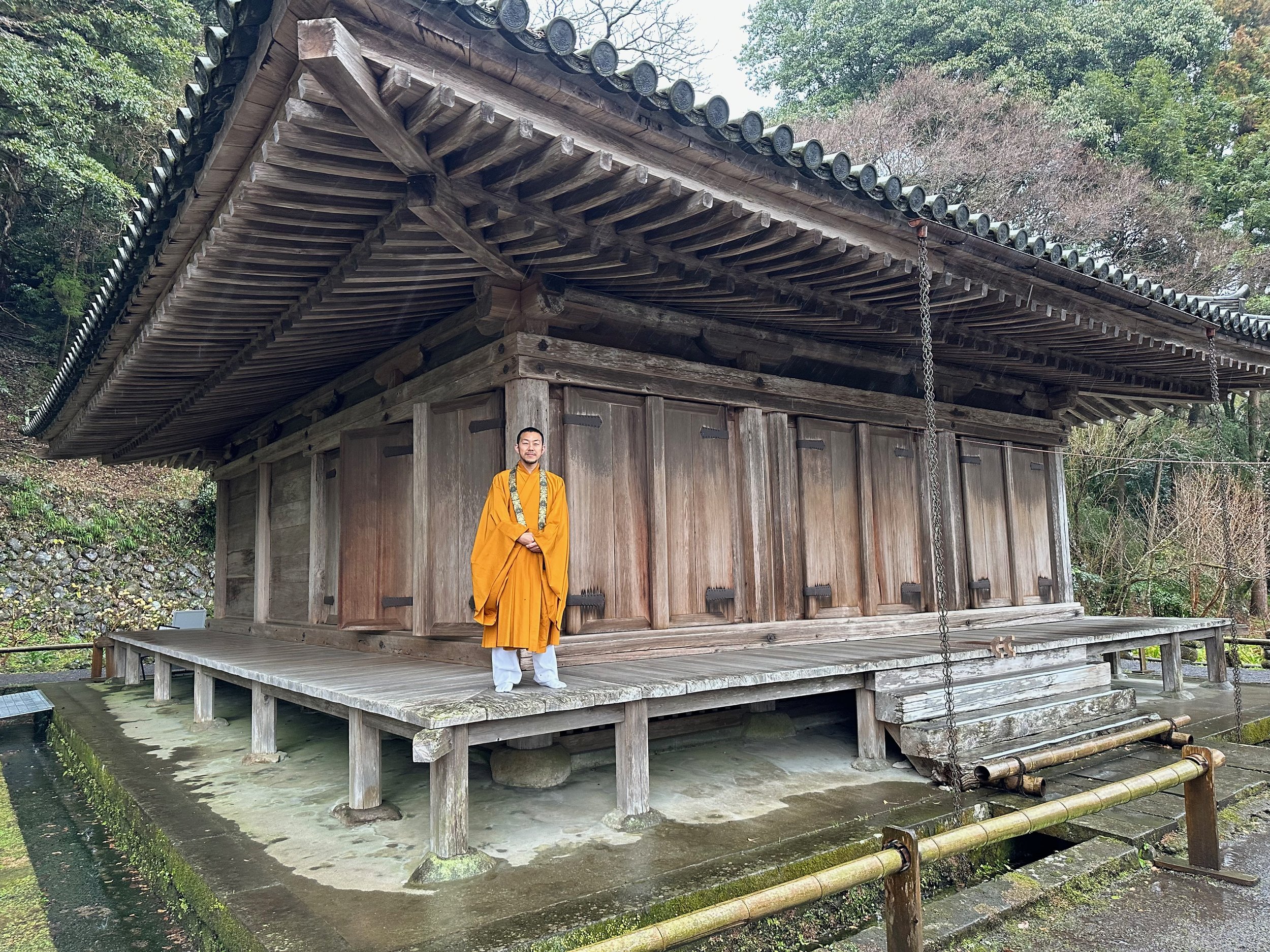Junyu Kono: Japan
The first time I encountered Junyu, he was making soba in a little room dedicated to the craft. He started by using his hands to mix water with milled buckwheat (the mill was also in the little room) in a large red bowl used specifically for this purpose. His hands moved with precision and obvious experience and, in under a minute, there was a perfectly shaped ball of a dough at the center of the bowl.
Junyu preparing the dough for soba
He transferred the dough to a board and used a long roller to start and flatten it out – keeping a perfect circle shape as he worked. He then started to roll the dough back onto the roller and in a few graceful movements almost too fast for me to follow, he somehow turned the perfect circle into a perfect square with slightly rounded corners (see video below). It was like a magic trick and it was so surprising and beautiful, I gasped audibly and welled up with tears. He folded the square several times and then, again, with total precision, he chopped perfect strands of noodles in seconds.
My friend, Mario, who was standing beside me, reacted to my emotions with a gentle nod. “He’s also a Buddhist Monk.”
Of course he is.
Junyu’s parents run a delightful ryokan (Japanese inn) called Fukinoto tucked away on the Kunisaki Peninsula on the island of Kyushu in Japan. As the chef of the inn, Junyu later cooked those soba noodles and several other amazing dishes (including some of the best yuba we have had so far) that we enjoyed wholeheartedly.
Their family takes care of the temple next door – it is a simple temple (Mario calls them neighborhood temples) accessible by a little trail from the inn. The main building is a centuries old wooden structure that holds faded paintings all around the interior and has a shrine dedicated to the Buddha of Compassion. In the morning, I met Junyu there and he performed a beautiful service and then we mediated for some time. I felt pretty nourished once again, in a different way.
Junyu in front of his family’s temple
I had a chance to sit down and chat with Junyu and, with the help of Mario translating, learned that at age 10, he decided he decided to start his training to be a monk. Junyu’s father, also a monk, surely encouraged this, but Junyu is adamant that his parents allowed him to choose his own path (not always so easy in this country of generational enterprises). Because monks are not paid handsomely, the cooking was a way for him to contribute to his family’s business.
To train in food, he worked in restaurants in Australia and Japan, eventually apprenticing for three years in soba under a master in Yufuin. The apprenticeship was unusual in that there was no direct guidance, he explained. “You were just expected to watch and learn as you helped out at the restaurant during the day. Then, you could practice after hours to try and replicate what you witnessed.”
When asked how long it took him to make soba so beautifully that it made me cry, his explanation upended my notion of the craft. “The adage is,” he said, “it takes three years to learn to mix the dough, three months to learn to roll it, and three days to learn how to cut it.”
Chatting with Junyu about many things
Junyu says he sees a very direct connection between his Buddhist practice and his cooking: inspired by the slow food movement and the food activist Natsu Shimamura, he realized when you eat “what you are consuming is not just food, but it is the sun, the soil, the water.” In Buddhism, one says a prayer before eating that expresses similar gratitude to the all living beings, to the origins of the food. “This is the connection,” he says. “Food is everything.”
Click below to hear Junyu sing the prayer before eating. And here is the translation:
With fortune and happiness
and with the blessings of Buddha and Ancestors
and by the grace of all living beings
I receive this pure food
I will explore the origins of food
but never its taste
Remembering its merits
but not commenting on the amount
‘Itadakimasu’


